Live and Invest Overseas, the leading overseas investment, real estate and retirement resource for more than 400,000 people around the world, announced its 10 best places in the world for you to live better, reinvent your life and have a grand adventure in 2019.
“We aren’t identifying the world’s top retirement havens. At least, these are not only the world’s top retirement havens right now,” said Kathleen Peddicord, author and publisher of Live and Invest Overseas. “These are simply the best places to be, regardless of your age or any other circumstances.”
#1: Algarve, Portugal
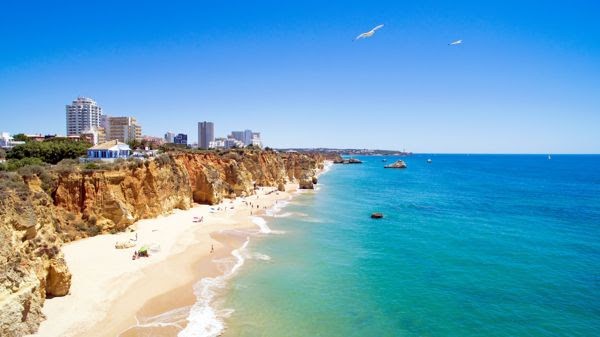
Cost Of Living: B
Health Care: A+
Entertainment: A-
Recreation: A+
English Spoken: A-
Expat Community: A+
Infrastructure: B+
Access To North America: B+
Environmental Factors: A-
Crime: A+
Affordability Of Real Estate: B
Real Estate Ownership Restrictions: A+
Residency: A
Taxes: B
Portugal’s Algarve region is a unique bit of European geography at the
southwestern corner of the Continent, at the longitude of Great Britain and the
latitude of Delaware. It is protected from winter by the movement of the ocean
in the Gulf Stream and, as a result, has the best climate in Europe, with 3,300
hours of sunshine every year, more than any other country in this part of the
world.
The Algarve is beautiful, affordable, welcoming, friendly, and safe. It boasts
some of the world’s best beaches and best golf courses plus a long and
interesting history. It was from this coast that Prince Henry the Navigator, an
architect of the Age of Exploration, bid his men to “sail on, sail
on.” Those orders compelled brave adventurers around the Cape of Good Hope
to China and India and then across the Atlantic.
The infrastructure in the Algarve is top-notch; this is not the developing world.
The health care is world-class and a fraction the cost of care in North
America. In fact, health care is free for residents, and establishing residency
is easy and cheap for anyone of any age.
The monarchs of Portugal and England married each other from the 14th century
on, creating the oldest alliance in Europe. As a result, English is widely
spoken in the Algarve, so you would not have to learn a new language if you
didn’t want to.
Resident in Portugal, your retirement income is not taxed, and various other
income can be tax-free, too.
#2: Cascais, Portugal
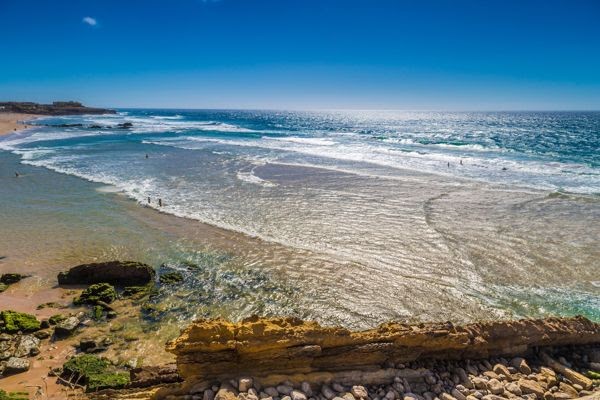
Cost Of Living: D+
Health Care: A+
Entertainment: A
Recreation: A+
English Spoken: A-
Expat Community: A+
Infrastructure: A+
Access To North America: B+
Environmental Factors: B
Crime: A-
Affordability Of Real Estate: C+
Real Estate Ownership Restrictions: A+
Residency: A
Taxes: B
Portugal takes first and second place on the list of best places to retire
overseas in 2019. Cascais, on this country’s coast just a 40-minute train ride
from Lisbon city center, is the best of both city and beach living, a seaside
town that’s not too big and not too small with a strong sense of community.
This is a well-heeled, high-end destination, one of the world’s most affordable
places to embrace a luxury-standard lifestyle on the ocean.
Cascais is spectacularly beautiful with a rugged coastline, white sandy
beaches, stone buildings, cobblestone sidewalks, museums, and parks. The people
are friendly, welcoming, and helpful. You’ll be instantly at home.
Life in Cascais is best lived without a car. You can walk to markets, shops,
cafés, and restaurants and, for recreation, venture out to explore nearby
seaside cliffs, forts, and lighthouses.
Summer in Cascais is all about being outside and enjoying the beaches. This
time of year you’d share the city with a vibrant crowd of tourists from around
the world. The winter months are quieter, a good time to get to know your
Portuguese neighbors.
The cost of living in Cascais is significantly greater than in the Algarve but
a bargain given the standard of living on offer.
While you could get by here without learning to speak Portuguese, English is
less widely spoken in Cascais than in the Algarve region.
#3: Mazatlán, Mexico
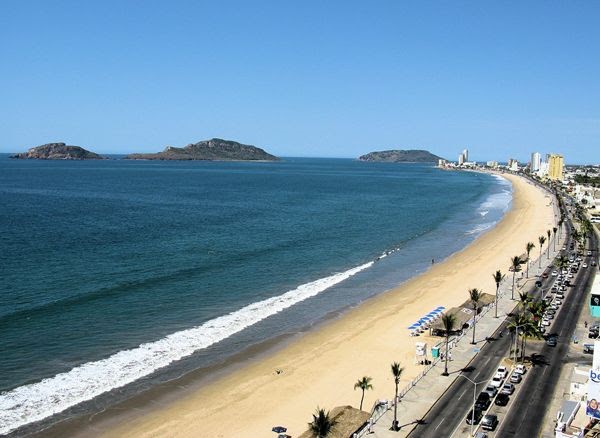
Cost Of Living: A-
Health Care: B+
Entertainment: A
Recreation: A+
English Spoken: B+
Expat Community: A+
Infrastructure: A+
Access To North America: A+
Environmental Factors: C
Crime: A
Affordability Of Real Estate: B+
Real Estate Ownership Restrictions: B
Residency: A-
Taxes: B
Over the past four decades, Americans have voted Mexico the world’s number one
place to live or retire overseas in the way that really counts—they’ve packed
up and moved there. This country is home to more American expats and retirees
than any other, at least 1 million and as many as 2 million.
Mexico’s primary attraction is its accessibility. It’s easier for an American
to get to Mexico than to any country other than Canada. Why go south of the Rio
Grande rather than to the Great White North? The weather!
Among this country’s many attractive lifestyle options, Mazatlán stands out.
Real city, beautiful beaches, and walkable colonial center… popular expat
choice and authentic Mexican resort town that manages to feel homey… Mazatlán
has it all.
Located about midway along Mexico’s Pacific coast, Mazatlán has been out of
favor among tourists and expats for decades but is making a comeback. The
renaissance has been focused on the city’s historic center, which has undergone
an impressive face-lift and now rivals Mazatlán’s 20 miles of beach for
attracting attention.
From December through March, daytime temperatures in Mazatlán hover in the high
70s, lows are in the low 60s, and there’s little to no rain. Between July and
October, on the other hand, temperatures are regularly 90 degrees and warmer,
and humidity levels are higher. This makes Mazatlán an ideal choice for
snowbirding.
Moving to Mazatlán can be as hassle-free as an international move gets.
Nothing’s as easy as loading up a truck and driving south. Your moving budget
could be gas and tolls.
#4: Cuenca, Ecuador
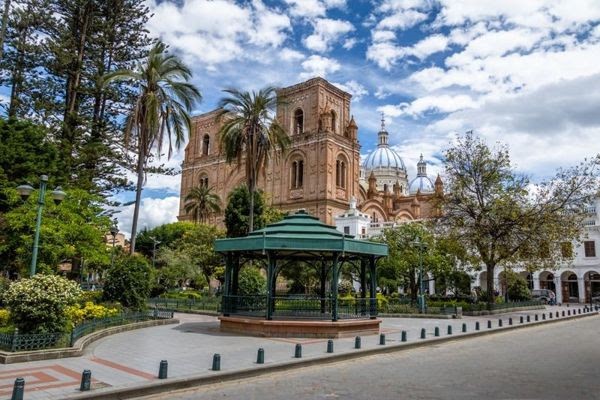
Cost Of Living: A+
Health Care: A-
Entertainment: A
Recreation: B+
English Spoken: B+
Expat Community: A+
Infrastructure: B
Access To North America: C-
Environmental Factors: A-
Crime: B-
Affordability Of Real Estate: A
Real Estate Ownership Restrictions: A+
Residency: A+
Taxes: B-
Cuenca is a beautiful city with cobblestone streets and a well-preserved
historic center that, though Ecuador is the developing world, enjoys reliable
electricity, modern internet service, and drinkable water throughout.
This is a walkable city, meaning you don’t have to invest in the expense of a
car. The mild climate means no heating or air conditioning costs, another
budget savings. Health care is first-rate and so inexpensive that it can make
more sense to pay for care out of pocket rather than insuring against it. All
things considered, Cuenca is one of the world’s most affordable places to
retire well. A couple could live here comfortably on a budget of US$1,000 per
month or less.
Further, Ecuador uses the U.S. dollar as its currency, meaning no exchange rate
risk.
Cuenca is home to one of the world’s biggest expat retiree communities. You’d
have plenty of support to help you with your transition.
The real estate market in Cuenca boomed between 2006 and 2014, when property
owners enjoyed double-digit appreciation year after year. Ecuador’s
infrastructure was improving dramatically during this time, oil prices were
high, crime was down, and things in this country were good. Ecuadorians living
abroad returned home to Ecuador by the thousands, many settling in
Cuenca.
Then property markets across Ecuador, including in Cuenca, retreated. From 2014
to 2016, values dropped by 50% and more. The market is now beginning to return.
Meantime, if you’re interested in owning your own home in Cuenca, this is the
time to shop for a bargain.
#5: Valletta, Malta
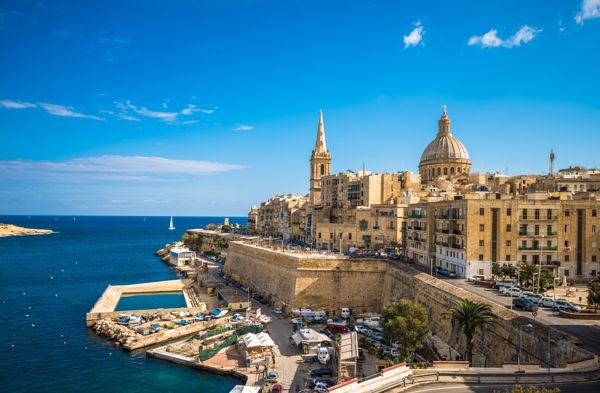
Cost Of Living: B
Health Care: A+
Entertainment: A
Recreation: A
English Spoken: A+
Expat Community: A+
Infrastructure: A-
Access To North America: C
Environmental Factors: C-
Crime: A
Affordability Of Real Estate: C-
Real Estate Ownership Restrictions: A-
Residency: A+
Taxes: A
The 3-island, 122-square-mile nation of Malta, with a population of just over
400,000 people, is a first-world jewel in the middle of the Mediterranean Sea.
An EU member where English is almost universally spoken by the multilingual
population, Malta is a safe, stable haven boasting an excellent overall
standard of living and top-notch health care. The Maltese people are warm and
welcoming with a culture all their own, and all Europe is a quick plane hop
away.
Malta’s rugged coastline boasts dramatic cliffs alternating with tiny coves
dotted with ancient forts and quaint fishing harbors. Inland, stone walls
separate fields of olives, wheat, and potatoes. Wine production is also
popular, and, in season, vines hang heavy with grapes all across the
island.
From its weather and food to its history and culture, Malta is not only the
best of Mediterranean Europe but also one of your most affordable options for
embracing this lifestyle.
The country has been working hard to raise its profile internationally, and
Malta’s capital, Valletta, was named 2018’s European Capital of Culture.
Malta does not offer a retiree visa, but its Global Residence Program for
non-EU citizens amounts to one of the best residency opportunities in Europe.
You can qualify simply by renting a place to live for as little as 800 euros
per month.
#6: Occitanie, France
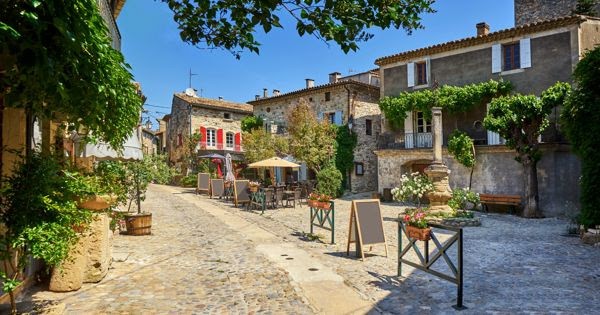
Cost Of Living: B+
Health Care: A+
Entertainment: B+
Recreation: A+
English Spoken: C
Expat Community: A+
Infrastructure: A
Access To North America: C+
Environmental Factors: A+
Crime: A+
Affordability Of Real Estate: B-
Real Estate Ownership Restrictions: A+
Residency: B
Taxes: C
The south of France is not very big, but it is in two parts. Provence is very
known and very expensive. Alongside it is the other south of France, Occitanie,
not known and not expensive. In Occitanie (formerly Languedoc) is little
Saint-Chinian, a quintessential French country village where everyday life is
like something out of Disney’s “Beauty and the Beast.”
This town is notable for two things in particular. First, its property prices,
which are half those of Provence and the Côte d’Azur.
The second reason for the growing popularity of Saint-Chinian is its wine. For
decades, the Occitanie produced vast quantities of quaffablevin de table but
nothing notable. Over the last dozen years, growers have specialized and built
on the AOC (appellation
d’origine contrôlée) status created in 1982 and are now producing
world-ranking red wines from the original Carignan, Cinsaut, and Grenache
grapes, with the addition of Syrah and Mourvèdre varieties.
Indeed, wine is the village economy. Saint-Chinian is home to 1,900 inhabitants
and 200 winemakers.
Sitting on a hillside in Saint-Chinian, enjoying the idyllic French country
scene, you could think you are in the middle of nowhere. However, Spain is near
enough that you could pop over for dinner, and Paris can be just three hours
away by TGV.
Thanks to the excellent train and bus service, you could live in Saint-Chinian
without a car. If you find you do need a lift somewhere, ask a neighbor. The
people of Saint-Chinian are disarmingly friendly and always ready to help out.
The French are often thought of as rude and aloof. In Saint-Chinian, the
reality is nothing to do with the stereotype.
#7: San Ignacio, Belize
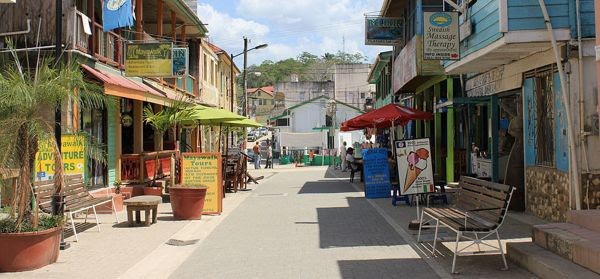
Cost Of Living: B
Health Care: D
Entertainment: D-
Recreation: B+
English Spoken: A+
Expat Community: A-
Infrastructure: C-
Access To North America: A-
Environmental Factors: A
Crime: B+
Affordability Of Real Estate: A-
Real Estate Ownership Restrictions: A+
Residency: A
Taxes: A+
Cayo is inland, in the Belizean rain forest. This is a land of mountains and
Mayan ruins, rivers, and waterfalls, Belize’s frontier. The wide-open spaces of
Cayo appeal to the adventuresome and the independent. Living here, you’d enjoy
elbow room, far-reaching vistas, and a clean slate. You could start over and
rebuild your life entirely.
You’d have a higher level of support than you might expect. The region today
known as Cayo once supported a population of Maya greater than the entire
current population of Belize. History has come full circle; the Cayo District
is again the heart and soul of Belize, home to the nation’s capital, the location
of one of the newest U.S. embassies in the world, and the fastest-growing
region in the country.
Cayo is one of the top choices worldwide for getting back to basics. The good
news is that going off the grid today does not have to be as challenging nor the
lifestyle as rugged as it was even 10 years ago. Today, amidst Cayo’s virgin
rain forest, you can live self-sufficiently in style and good company.
Driving along the Western Highway from Belize City to Cayo, the view from your
window is of fields and pastures, trees and jungle, rivers and livestock. Here
and there a small house of concrete block or timber, in the distance the
outline of the Maya Mountains. The land in Cayo is fertile. Farmers grow corn
and sugarcane, watermelons and citrus.
San Ignacio is Cayo’s biggest town and home to a large and growing community of
foreign retirees and expats. You could settle in among them easily, as everyone
speaks English and Belize residency is easy to establish.
#8: Annecy, France

Cost Of Living: C
Health Care: A+
Entertainment: A
Recreation: A-
English Spoken: B+
Expat Community: C
Infrastructure: A
Access To North America: B+
Environmental Factors: A+
Crime: B+
Affordability Of Real Estate: C
Real Estate Ownership Restrictions: A+
Residency: B
Taxes: C
Only a few cities in the world can hope to meet the expectations of a nature
lover, a museum aficionado, a foodie, an adrenaline junky, and a fashionista.
Annecy offers a lifestyle that satisfies all these agendas.
Historically, Annecy has been known for its skiing (this is the Pearl of the
French Alps) and its lake, one of the cleanest in the world. Cradled as it is
between its crystal blue lake and the surrounding Alpine summits, the city is
naturally protected from large-scale development and has managed to retain its
traditional village appeal.
Annecy is an open-air museum. Dating back to the Gallo-Roman Empire, the city
was the capital of Savoy, the longest-surviving royal house in Europe. Boasting
today the twin titles “City of Art and History” and “City in Bloom,” Annecy
serves up more than its share of castles, museums, pastel-colored townhomes,
and other historical sites alongside modern theaters, cinemas, and festivals.
The streets become a giant circus in July for the annual art festival known as
Les Noctibules, and every August the much-anticipated Fête du Lac features the
biggest fireworks show in Europe.
If France is the country of cheese, Savoy is its heart. Annecy residents lunch
on tartiflette (a
melted potato and bacon pie smothered in Reblochon cheese) and dine regularly
on la fondue raclette.
This part of France is home to many notable restaurants, including several with
Michelin stars. World-famous Savoyard chef Marc Veyrat was born in Annecy and
takes inspiration from its lake fish for signature dishes.
#9: Città Sant’Angelo,
Italy

Cost Of Living: B+
Health Care: A+
Entertainment: A
Recreation: A+
English Spoken: D
Expat Community: D
Infrastructure: A
Access To North America: B+
Environmental Factors: A
Crime: A+
Affordability Of Real Estate: B
Real Estate Ownership Restrictions: A+
Residency: C
Taxes: C
Abruzzo, historically one of the poorest regions in the country, had fallen off
the national map until just a few decades ago. Since the 1950s, however,
Abruzzo has seen steady economic growth. In the 1990s, its growth surpassed
that of any other region in Italy and its per capita GDP expanded to become the
highest in the country. The construction of new highways made it more easily
accessible from Rome, opening up the region domestically and attracting state
and private investment the likes of which Abruzzo had never seen before.
Today, the per capita GDP well outpaces that of the rest of southern Italy (and
is a healthy 84% of the national average). Today, this is the richest region in
this part of Italy. Yet it remains absolutely affordable, one of Europe’s
greatest bargains. Abruzzo has everything Tuscany offers and more, at a
fraction the cost.
New development is taking place across the region, and small towns are working
hard to attract investment to save their historically significant but nearly
deserted streets. Nowhere is this truer than in Città Sant’Angelo, perhaps the
most appealing spot in this welcoming region. This would be an ideal place to
embrace the best of traditional Italian life.
The downside could be language. Living in Città Sant’Angelo, you’d need to
learn to speak Italian.
#10: George Town, Malaysia

Cost Of Living: A
Health Care: A+
Entertainment: A-
Recreation: A+
English Spoken: A
Expat Community: A-
Infrastructure: A-
Access To North America: D
Environmental Factors: C-
Crime: C+
Affordability Of Real Estate: B-
Real Estate Ownership Restrictions: C
Residency: B-
Taxes: A+
Penang isn’t just another lost-in-time outpost of the former British Empire.
Combining all that’s appealing about island and city living, the “Pearl of the
Orient” is one of Southeast Asia’s most livable destinations. Low costs are a
big part of the appeal. In addition, health care is excellent, foreigners are
welcome, and the country is safe and stable.
The population is a melting pot of Malay, Straits Chinese, Chinese, Burmese,
Arab, Thai, Indonesian, and Indian. Thanks to its colonial past, English is the
language that holds the ethnic stew together.
Life here is both traditional and 21st century, exotic and comfortable. Beyond
the high-rise apartments of modern George Town is one of the best-preserved old
cities in Asia. Hidden along the winding streets of this UNESCO World Cultural
Heritage Site are old shophouses, guildhalls, and clan houses.
Then there’s the great outdoors. Almost on the city’s doorstep are stylish
seaside settlements with palm-fringed sandy beaches and a backdrop of lush rain
forest.
This city is recognized as an Asian culinary capital. Delicious specialties
like Char Kway Teow, noodles with shrimp, chili paste, and cockles, are less than
US$2 per portion.
Malaysia is one of the world’s most tax-friendly jurisdictions. As a resident
of this country, you are taxed only on income derived from within the country,
meaning that even income you remit to Malaysia is not taxed as long as it was
earned elsewhere.


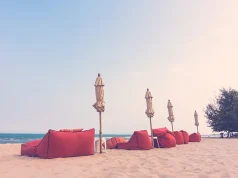



That’s a great list. Loved it.
[…] Travel ranks the following cities as the best all-around locations regardless of age. Some factors considered include affordability, healthcare, infrastructure, […]